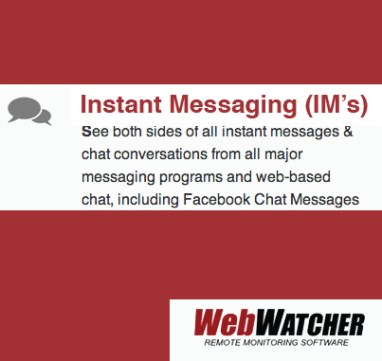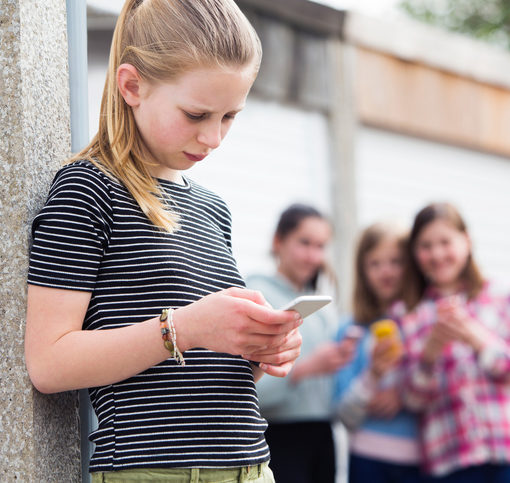While many teens can be found texting, surfing the internet, texting and talking, screens also aren’t uncommon amongst the younger set. Parents are often seen passing their phone or tablet over to younger kids for easy entertainment. And sometimes even babies are screen proficient.
Screens have flashed their way into everyday life. For better or worse. However, screen time parental control functions are part of many monitoring apps (like WebWatcher) that allow parents to take control of what their kids do and see on those screens.
So what are the phone features that parents need to think about monitoring/controlling:
- Usage limits (especially if you want younger kids to have less screen time)
- App downloads
- Text messages
- Deleted screen grabs
- Photo streams
- Social media messaging
But wait! Before parents install any monitoring software or apps onto a kid’s phone, they need to disclose it and talk to their kids/teens about why monitoring is necessary. Screen time parental control apps are not meant to be used to spy on kids.
Using these apps/software in a sneaky way may erode trust between kids and parents. Have an honest conversation with kids about the software and how it will be used.
You also should reassure kids/teens that as they get older, less monitoring may be necessary.
Obviously, if they show that they are trustworthy and follow the rules online, the tethers of monitoring may be loosened.
Screen Time Parental Control: Time Limits
No one—including adults!—should spend hours upon hours staring at a screen. Our bodies were made to move, and physical activity is healthy for the body. Parents are often concerned that kids and teens spend way too much time on devices, including their phones.
Children need at least an hour of activity a day. And, yes, that includes teens up to age 17. Teens that are spending eight hours a day during the weekends gaming online might need to have limitations enforced.
In April 2019, the World Health Organization (WHO) released new recommendations pertaining to screen time and physical activity for children 5 years and younger. WHO noted that babies should have no screen time and toddlers and preschoolers (1 to 4) should be limited to one hour or less of screen time a day.
Time limitations, though, may differ per family. Some parents want to set stronger limitations for time online, but others may be a bit more relaxed.

Screen Time Parental Control: Restricting App Downloads
Some apps may be popular among teens, but they also may pose a concern because of cyberbullying or other issues. For this reason, parents may choose to make certain apps restricted for download.
Parents may choose to restrict apps that:
- May be too mature for teens (based on an app review or rating)
- Involve online dating
- Let users post anonymously
- Allows video chatting or face-to-face phone calls
- Feature explicit content
Parents should first talk to kids/teens about why these apps are on their restricted list. Teens need to understand the basis for parental control and the reasons behind the app restrictions.
Screen Time Parental Control: Text Messages
Parental control software like WebWatcher also can let parents monitor text messages. But, again, parents need to understand that this feature isn’t for spying.
When teens know that parents see their messages, they may feel more accountable. And they should ALWAYS know that parents are able to read their messages.
Monitoring can help teach responsibility and online accountability. Talk to kids about online behavior/etiquette and what they should NEVER send online or via message/video, including:
- Inappropriate/explicit photos (this can have legal consequences)
- Foul or inappropriate language
- Threats of any kind
- Personal information
The most important rule in life is to treat others with respect and to be kind. If you wouldn’t say it in a classroom or in public, don’t say it online. Post with kindness.

Screen Time Parental Control: Deleted Screen Grabs
Sometimes teens take a screen grab of a friend’s message or picture and then save it or pass it on. But when teens snap a screenshot of a private message that contains personal information, explicit images or inappropriate content, there could be consequences.
Parental control software should let you view deleted screen grabs. This gives you peace of mind regarding what teens have shared or seen. But you also can see if they are sharing things that should not be shared or saved.
Screen Time Parental Control: Photo Stream
Pictures are worth 1,000 words. If your teen is the king/queen of selfies, you may be seeing a LOT of silly shots. But that photo stream also may have other pictures that could get them into trouble.
Monitoring software also should let you have access to the photo stream in your teen’s device. This lets you know if there is any content that you need to discuss. Or you could just see a lot of fun, funny or maybe even crazy photos of your teen.
Just be sure they know that those photos are visible to you…and that you’re watching that stream.

Screen Time Parental Control: Social Media Messaging
Social media messaging is one area that parents also wish to monitor to be certain that their teens are acting appropriately online and to ensure that their teen isn’t being bullied.
Most parental control apps have limitations regarding what can be monitored on social media platforms. With WebWatcher, parents can typically view either incoming messages or notifications that have been sent via a social media app.
However, outgoing messages might not be accessible. Again, open a dialogue with teens about any inappropriate messages. Since they should already know they are being monitored via the software, they will likely expect the conversation…they may even initiate it themselves.
Parental control apps and software should offer comprehensive options to keep teens/kids safe online. But software also may allow parents to set time limitations on the device, so teens don’t spend every waking moment staring at a screen. Even if the app doesn’t provide time limitation parameters, the phone’s software often lets parents set time limits and restrictions.
No matter what you plan to monitor or review, always tell teens/kids that they will be monitored. Transparency means that teens understand the rules and expectations and that parents understand and respect personal boundaries.





